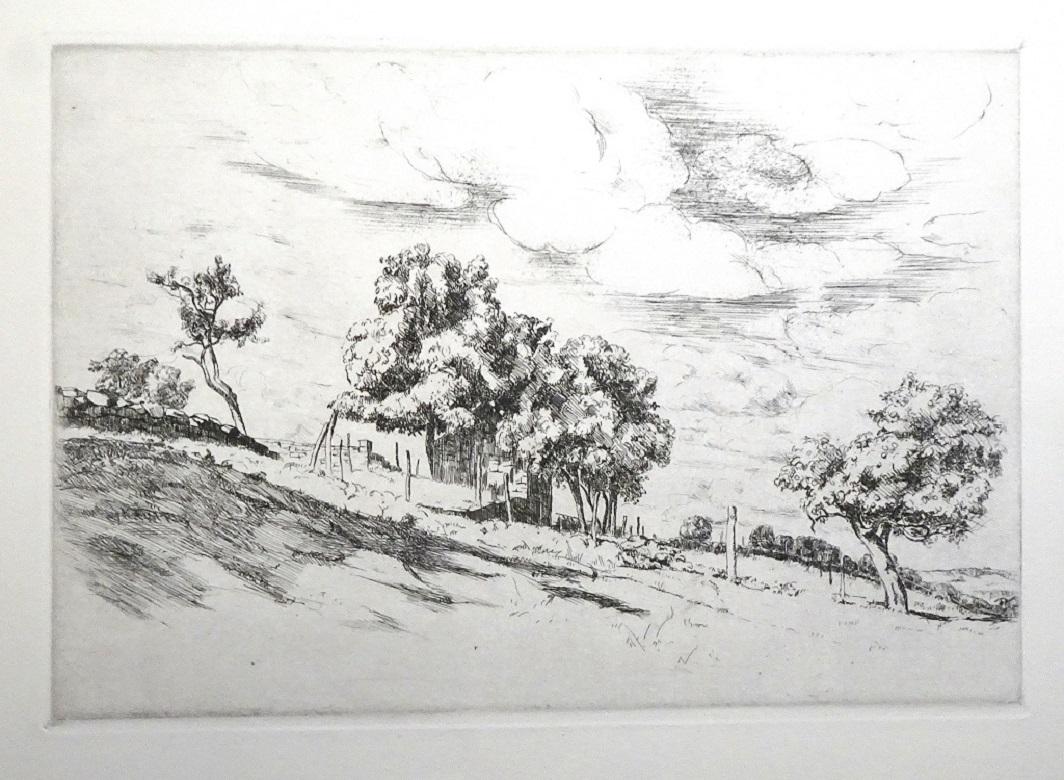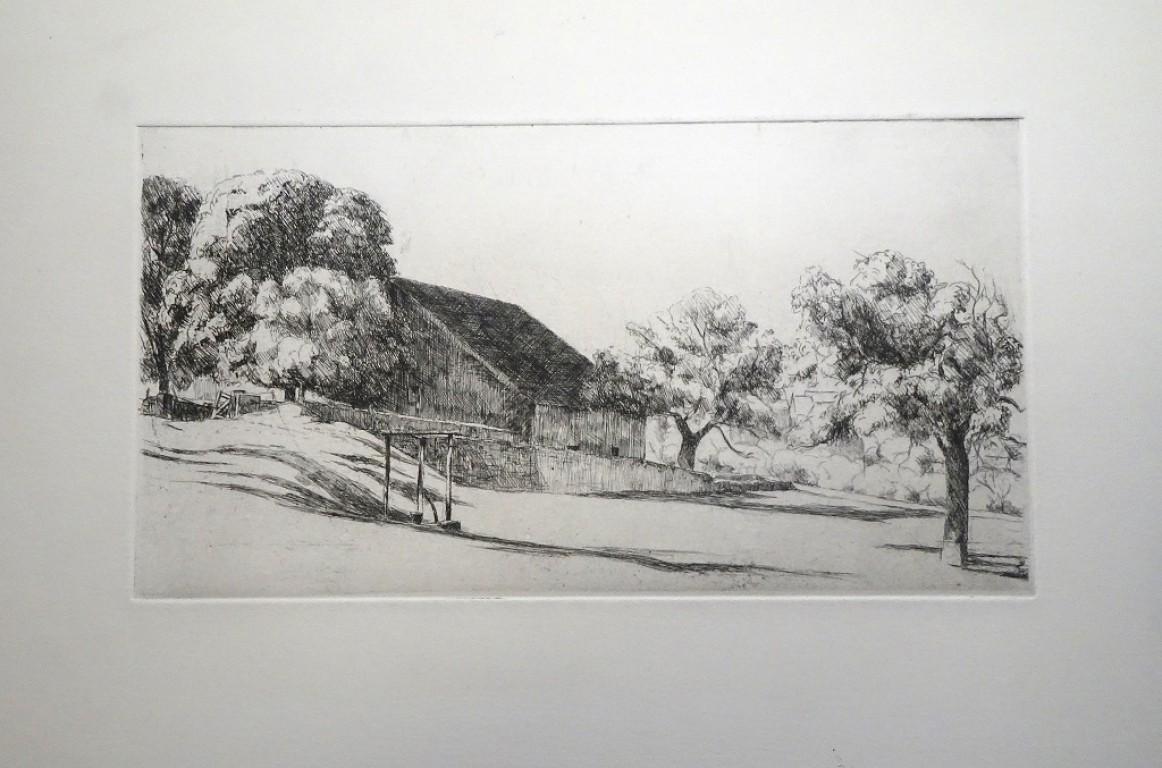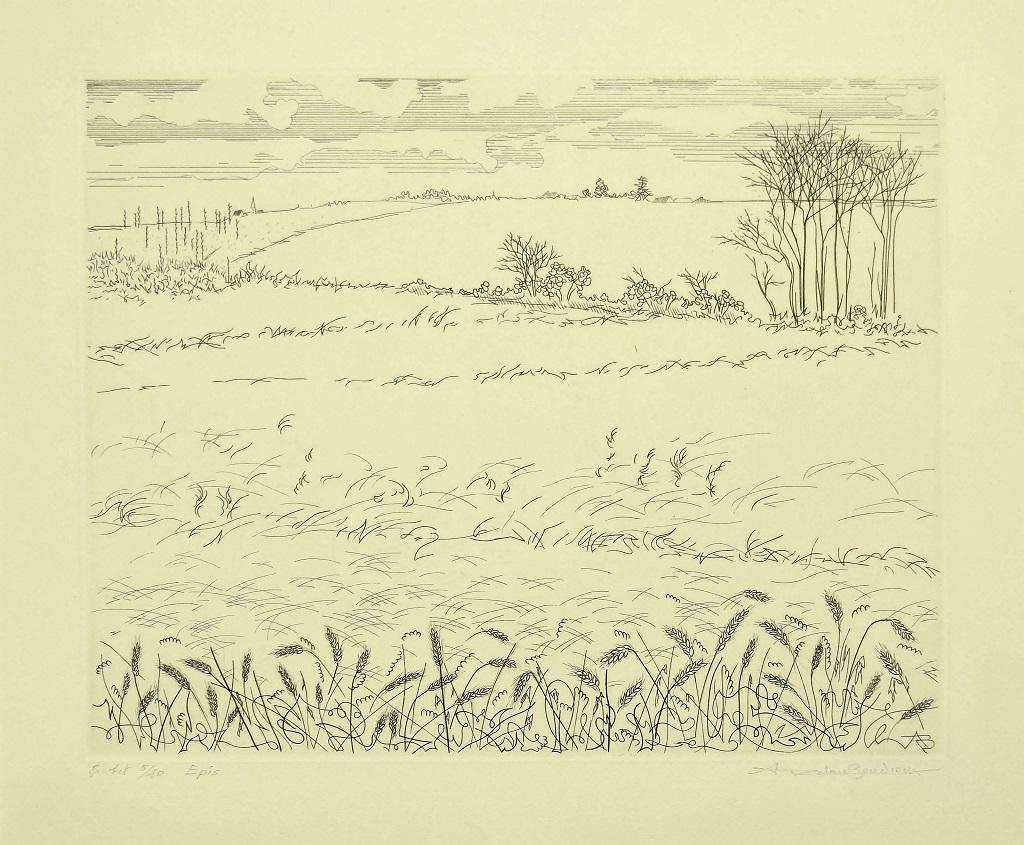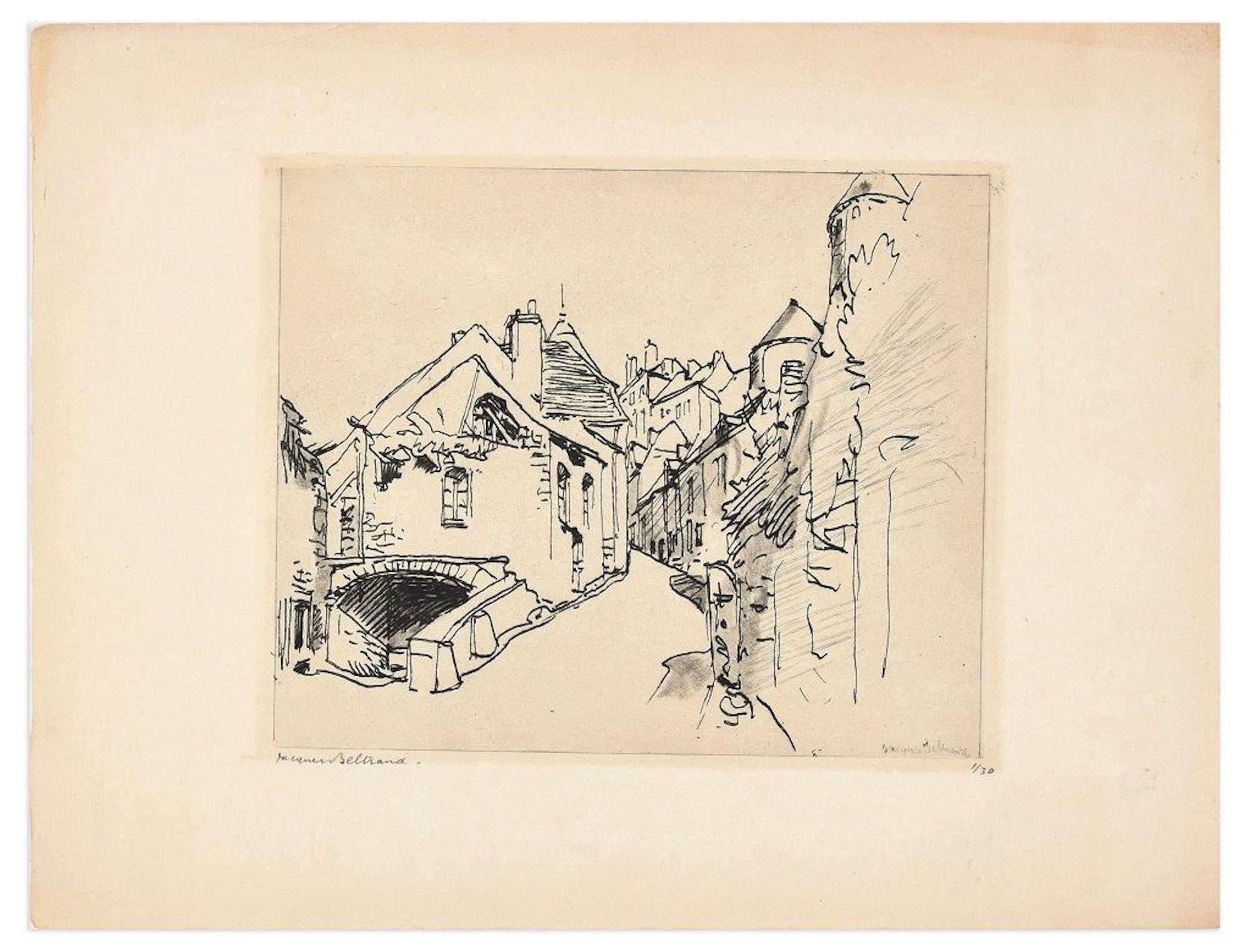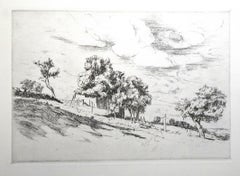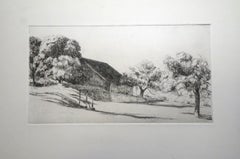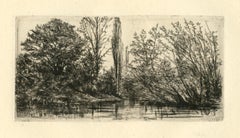Items Similar to Untitled - Original Etching and Drypoint by Eugène Corneau - 1930s
Want more images or videos?
Request additional images or videos from the seller
1 of 2
Eugene CorneauUntitled - Original Etching and Drypoint by Eugène Corneau - 1930s1930s
1930s
$213.40
£162.16
€180
CA$299.47
A$326.55
CHF 169.72
MX$3,909.20
NOK 2,152.76
SEK 2,016.46
DKK 1,371.25
About the Item
Untitled is an original artwork realized by Eugène Corneau in the first years of the 1930s. Etching and drypoint on paper. Monogram of the artist on the lower left. Excellent conditions. Precious artwork realized with a combination of drypoint and etching representing a beautiful rural landscape with some buildings.
Eugène Corneau (Vouzeron, 1894 – Pontaubert, 1976) was a French painter, artist, and engraver. From 1901, he lived in Paris, and he regularly exhibited at the Salon d’Automne, where, in 1953, he became one of its members. From 1923, he also exhibited at the Salon des Tuileries. In 1925, he obtained a scholarship and, from 1925 to 1926, he studied at Algeri and travelled along North Africa. When he went back to France, he moved to Pontaubert, where he lived until his death. From 1941 to 1944, he travelled along Berry in France. He exhibited for the first time in 1918 in Paris. He decorated the Berry-Nivernais Pavilion for the Universal Exposition. In 1940, he exhibited at the Venice Biennal; he exhibited also in Bruxelles (1925, 1928), in Alger (1927), New York (1928, 1938), Harleem (1931) and Tunis (1943). An important retrospective on his work took place in 1975 in Saint-Jean-de-Monts (Vandée). From 1953 to 1962, he taught engraving art at the National School of Fine Arts of Algeri and became the vice-president of the Society of French Painters and Engravers. He illustrated several artworks, such as Le songe de Vaux by La Fontaine and Typhon by Conrad. In his life, he realized several artworks representing Breton and Provençal landscapes, old streets of French villages, and harbours of the Atlantic Ocean.
- Creator:Eugene Corneau (1894 - 1976)
- Creation Year:1930s
- Dimensions:Height: 9.85 in (25 cm)Width: 12.6 in (32 cm)Depth: 0.04 in (1 mm)
- Medium:
- Movement & Style:
- Period:
- Framing:Framing Options Available
- Condition:Insurance may be requested by customers as additional service, contact us for more information.
- Gallery Location:Roma, IT
- Reference Number:Seller: M-967641stDibs: LU65034159491
About the Seller
4.9
Platinum Seller
Premium sellers with a 4.7+ rating and 24-hour response times
1stDibs seller since 2017
7,805 sales on 1stDibs
Typical response time: 1 hour
- ShippingRetrieving quote...Shipping from: Grasse, France
- Return Policy
More From This Seller
View AllUntitled - Original Drypoint by Eugene Corneau - XX Century
By Eugene Corneau
Located in Roma, IT
Untitled is an original artwork realized by Eugène Corneau during the 1930s.
Etching and drypoint on paper. Monogram in pencil on the lower left.
Excellent conditions.
Precious an...
Category
20th Century Modern Landscape Prints
Materials
Drypoint
French Village - Original Etching and Drypoint by Eugène Corneau - 1930s
By Eugene Corneau
Located in Roma, IT
French Village is an original artwork realized by Eugène Corneau between the end of the 1920s and the beginning of the 1930s.
The monogram of the artist is present on the lower left...
Category
1930s Modern Figurative Prints
Materials
Drypoint, Etching
French Landscape - Original Etching by E. Corneau - 1930s
By Eugene Corneau
Located in Roma, IT
French Landscape is an original artwork realized by Eugène Corneau during the 1930s.
Etching and drypoint on paper.
Very good conditions except for some small folds on the left mar...
Category
1930s Modern Landscape Prints
Materials
Drypoint, Etching
French Landscape - Etching by Eugene Corneau - Mid-20th Century
By Eugene Corneau
Located in Roma, IT
French Landscape is an artwork realized by Eugène Corneau during the 1930s. Etching and drypoint on paper.
Very good conditions except for some small folds on the left margin.
Preci...
Category
Mid-20th Century Modern Landscape Prints
Materials
Etching
Epis- Original Etching by Andre Roland Brudieux - Mid 20th Century
By André Roland Brudieux
Located in Roma, IT
Epis is an original Contemporary artwork realized by the artist André Roland Brudieux (1921-1999) in the mid 20th Century.
Original B/W Etchin...
Category
Mid-20th Century Modern Landscape Prints
Materials
Etching
The Village - Original Etching on Paper by J. Beltrand - Early 20th Century
By Jacques Beltrand
Located in Roma, IT
The Small Village is an original artwork realized by Jacques Beltrand in the first decades of the XX Century.
Image dimensions: 17x20.5 cm.
Original etching on paper. Hand-signed in pencil by the artist on the lower left corner. Signed on plate on the lower right corner. Numbered in pencil on the lower right corner. First edition of 30 prints...
Category
Early 20th Century Modern Figurative Prints
Materials
Etching
You May Also Like
"Near Voudenay" original etching
By Philip Gilbert Hamerton
Located in Henderson, NV
Medium: original etching. This impression on laid paper was printed in London in 1868 for the rare first volume of Philip Gilbert Hamerton's "Etching and Etchers". In addition to bei...
Category
1860s Prints and Multiples
Materials
Etching
Early 20th Century Signed Etching By Armin Carl Hansen -- Valley Farm
By Armin Hansen
Located in Soquel, CA
Signed 1926 Armin Carl Hansen Etching and Drypoint of Central Coast California Valley Farm
Wonderful etching and drypoint of Valley Farm signed and titled by Armin Carl Hansen (Amer...
Category
1920s American Impressionist Landscape Prints
Materials
Laid Paper, Etching
$1,904 Sale Price
20% Off
"Ferme a Vauhalan" original etching
Located in Henderson, NV
Medium: original etching. Published in 1912 by Gazette des Beaux Arts. Plate size: 5 x 9 1/4 inches (128 x 232 mm) on cream laid paper. Signed in the plate, not by hand.
The Gazett...
Category
1910s Landscape Prints
Materials
Etching
'Near Mrs. Teshmakers, Edmonton' original etching by John Thomas Smith
By John Thomas Smith
Located in Milwaukee, WI
The present is one of the many prints John Thomas Smith produced of English cottages and vernacular architecture. This example, a view of a cottage in Edmonton, is closely related to...
Category
1790s Old Masters Landscape Prints
Materials
Paper, Etching
Superlative Sunrise - Original etching, 1943
By Jean Frélaut
Located in Paris, IDF
Jean FRELAUT
Superlative Sunrise
Original etching
Printed signature in the plate
On Arches vellum 30 x 25 cm (c. 12 x 10 inch)
Printed in Haasen workshop in 1943
Excellent condition
Category
1940s Modern Landscape Prints
Materials
Etching
"Auf der Tenne" original etching
Located in Henderson, NV
Medium: original etching. Published in Berlin by Bruno Cassirer in 1904 for Kunst und Kunstler. The plate measures 5 1/2 x 7 1/4 inches (140 x 185 mm). Not signed.
Category
Early 1900s Landscape Prints
Materials
Etching
